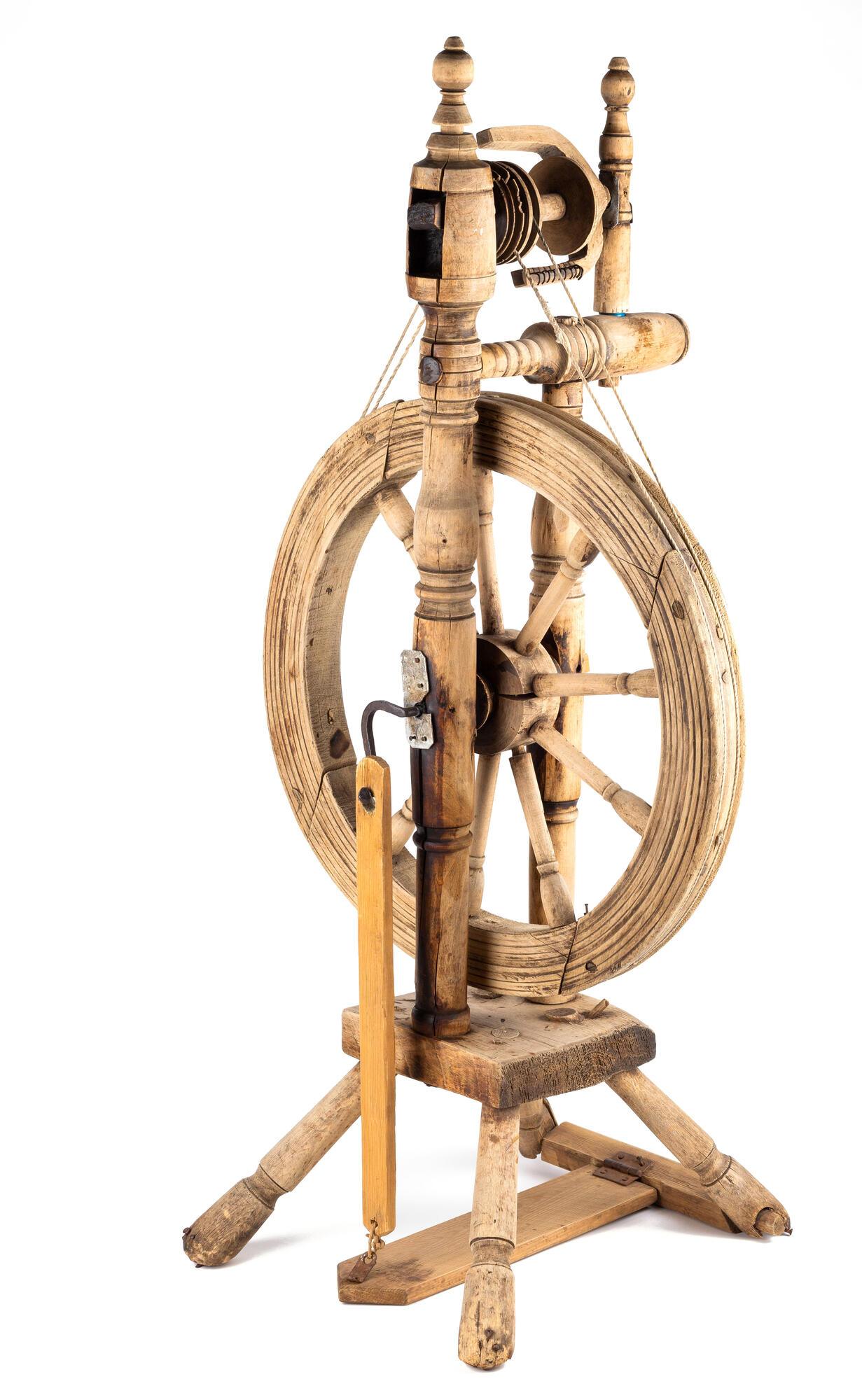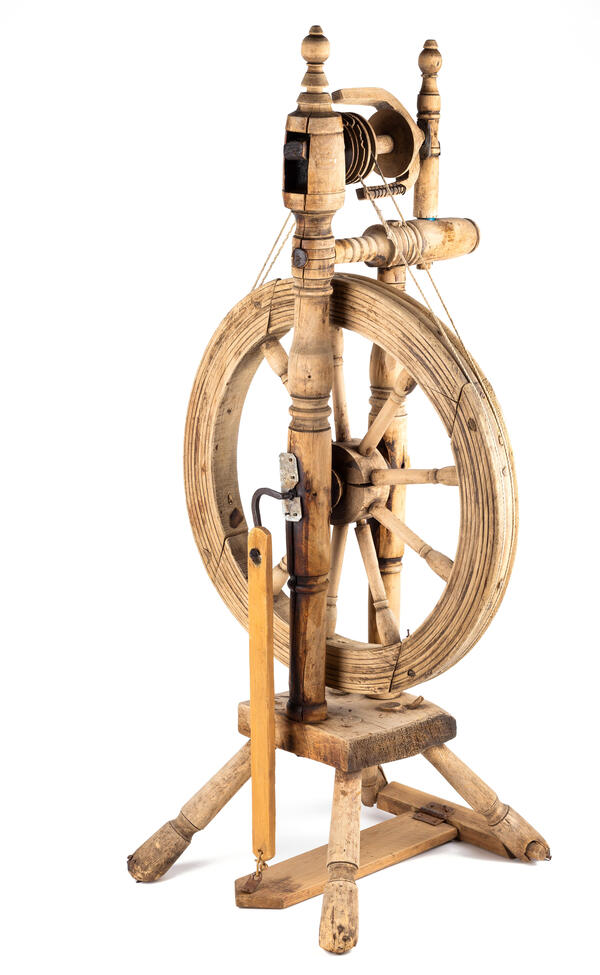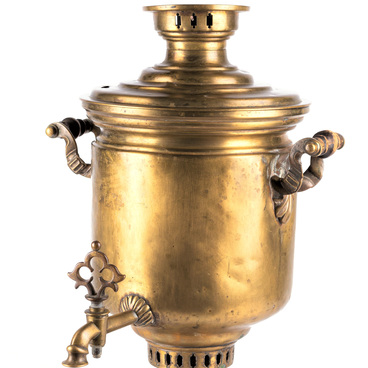The spinning wheel is a device to manually produce yarn from tow, which is wool or flax and hemp fibers that have been prepared for spinning. A mechanical spinning wheel - also called a treadle wheel - needs to have a wheel that feeds the thread onto a spool. The wheel is put in motion by a special pedal; this appeared on spinning wheels in the 16th century. The wheel could be located on the same plane as the bobbin, or it could sometimes be located underneath it. A bobbin is a spool used for winding thread.
Work on a treadle wheel began by the spinner manually twisting some fiber into a thread, inserting it through the hook system on the bobbin, and fastening it to the spool. Next, by pressing her foot on the footboard, she set the wheel in motion, which in turn made the bobbin rotate. Simultaneously, the woman pulled out the fiber with her hand, which, thanks to the rotation of the bobbin, was spun into a thread and wound onto the spool. The main advantage possessed by treadle wheels was how efficiently they worked: about 400 grams of wool could be spun in a single day. Over time, the design of treadle wheels was improved by putting a special fork near the spool: women no longer needed to stop and rewind the threads separately.
By even the 19th century, among Russian peasantry treadle wheel, which first appeared in Russia at the end of the 17th century, was not as widespread as the spindle - a simpler, cheaper device. All over the world, by the 16th century the treadle wheel had virtually supplanted its manual counterpart, which was now used only by those who liked following older traditions, as well as those who could not afford the mechanical version.
The method of making yarn itself was invented a long time ago. Yarn was originally spun by hand. To simplify this work, the spindle was first invented, and then the treadle wheel was invented. Even by the end of the XIX century to the start of the XX century, the spinning wheel was incredibly important for every peasant family. This made it possible to create threads from wool or fibers from plant materials that were used to subsequently produce fabrics. Spinning wheels disappeared from pervasive use in everyday life only after industry became well-developed, when factory-made yarns and fabrics became easier, and cheaper, to buy than to make by hand.
Work on a treadle wheel began by the spinner manually twisting some fiber into a thread, inserting it through the hook system on the bobbin, and fastening it to the spool. Next, by pressing her foot on the footboard, she set the wheel in motion, which in turn made the bobbin rotate. Simultaneously, the woman pulled out the fiber with her hand, which, thanks to the rotation of the bobbin, was spun into a thread and wound onto the spool. The main advantage possessed by treadle wheels was how efficiently they worked: about 400 grams of wool could be spun in a single day. Over time, the design of treadle wheels was improved by putting a special fork near the spool: women no longer needed to stop and rewind the threads separately.
By even the 19th century, among Russian peasantry treadle wheel, which first appeared in Russia at the end of the 17th century, was not as widespread as the spindle - a simpler, cheaper device. All over the world, by the 16th century the treadle wheel had virtually supplanted its manual counterpart, which was now used only by those who liked following older traditions, as well as those who could not afford the mechanical version.
The method of making yarn itself was invented a long time ago. Yarn was originally spun by hand. To simplify this work, the spindle was first invented, and then the treadle wheel was invented. Even by the end of the XIX century to the start of the XX century, the spinning wheel was incredibly important for every peasant family. This made it possible to create threads from wool or fibers from plant materials that were used to subsequently produce fabrics. Spinning wheels disappeared from pervasive use in everyday life only after industry became well-developed, when factory-made yarns and fabrics became easier, and cheaper, to buy than to make by hand.



